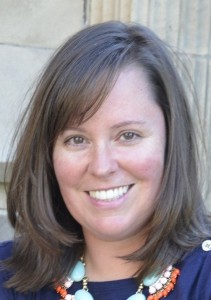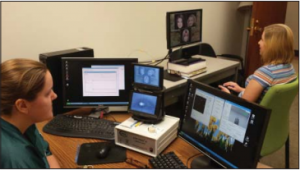By Sarah Mann, College of Letters & Science
 Professor Deborah Hannula
Professor Deborah Hannula
Usually, memory’s a helpful thing to have when you’re working on a project. It’s a lot easier to find your keys if you remember where you put them down, for example. But your memories might not always be so beneficial. Professor Deborah Hannula is conducting research in the relatively unexplored field of memory’s effects on attention, and her work has netted her the first National Science Foundation CAREER Award to ever be earned by a member of the UWM Psychology Department. Hannula’s is a five-year grant that was awarded in June. “NSF CAREER grants are one of the nation’s premier awards for young researchers who are on their way to becoming the future leaders in their fields. Our Psychology Department’s rapidly rising national reputation is due in large part to the cutting-edge research conducted by Deborah Hannula and others,” said Rodney Swain, Dean of the College of Letters and Science at UWM. Hannula’s research seeks to answer questions about whether people’s attention can be co-opted from the task at hand if there is a meaningful and remembered object within the environment. The answers she finds could impact the field of mental health.
“The research may have implications for things like Post Traumatic Stress Disorder or certain types of psychiatric conditions,” Hannula said. “Imagine that you’ve had a negative experience and that a neutral object was present at the time. This neutral object happens to be something that is present in the environment in lots of situations. … It is reasonable to ask, will the object suddenly capture your attention in a way that keeps you from completing on-going tasks effectively?”
To answer that question, Hannula will be conducting experiments that measure the eye movements and brain function of her participants. Participants will study a series of pictures to commit them to memory for a test at the end of the experiment. Before the test, they’ll engage in an attention task: Participants will be told to look at the middle of a screen
at a fixed point and respond to a target stimulus – in this case, they’ll try to fi nd an orange spot that will appear on the screen – as quickly as possible. The pictures they studied may be appear as well during this task, but they are irrelevant and unrelated to the current goals or objectives.
“Under these circumstances, we can address questions about the potential for remembered content to capture attention, and if this occurs, we can evaluate how long it takes before attention can be effectively disengaged and reallocated in a manner consistent with current objectives,” Hannula said. “The work has potential real-world implications because it’s possible that memory-based capture is slowing us down or making us less effective in a variety of situations, particularly in cases of neurological or psychiatric disorder. … In addition to addressing these basic questions, we will also attempt to identify the neural mechanisms that contribute to capture and subsequent disengagement of attention from capturing content.”
 Elaine Mahoney demonstrates how to track the eye movements to determine if remembered content can capture attention and impact task performance. Photo courtesy of Deborah Hannula.
Elaine Mahoney demonstrates how to track the eye movements to determine if remembered content can capture attention and impact task performance. Photo courtesy of Deborah Hannula.
She measures the “memory-based capture” by tracking the participants’ eye movements with infrared light. The light, projected from a camera, creates a corneal reflection off of the eye. The camera keeps track of the position of the reflection with respect to the eye’s pupil and Hannula uses that data and a computer algorithm to determine where the participant was looking and for how long.
In addition, Hannula will be using Functional Magnet Resonance Imaging, or fMRI, to measure brain activity during the performance of the task. The scans are expensive – about $1,000 per participant – so the CAREER grant will help defray the costs of the project. The fMRI shows which parts of the brain are active during the memory and attention task. “We’ll be able to look at trials in which participants’ eye movements were captured by an object versus trials in which that didn’t happen, and then we can see, by comparing these two trial types, the brain regions that are more active when capture occurs – the identified regions must be contributing to that process,” Hannula said. “We’re going to be collecting the eye movement data during scanning. So we’re combining those two techniques. That way, we’ll be able to sort the trials not only on the basis of behavioral performance like response time, but also based on these eye movement measures of capture, which is unusual. Very few researchers combine fMRI and eye-tracking methods like this.”
Hannula’s work doesn’t stop with her experiments, however. The NSF CAREER grant includes an educational and community outreach component. Over the summer, Hannula hosted a three-day workshop for high school students in the Upward Bound math and science program at UWM to introduce them to the basics of attention, memory and neuroscience. In the fall of 2015, she will be teaching a freshmen seminar to discuss how cognitive neuroscience is portrayed in the media, especially in the context of computerized brain-training tools that have become increasingly popular. Hannula will also be forming a book club to encourage community members to read and think about the brain and memory.